Melbourne’s high-rise nightmares taking a tall toll on residents and investors
The Age
By: Aisha Dow
25 September 2016
We have watched them sprouting up all over Melbourne, transforming our
streets and skylines with the promise of solving the housing
affordability crisis. But many of those closest to the booming industry
say they wouldn't buy one.
be cheaper to build the apartments again
All across Melbourne, new apartments riddled with faults have been sold
to investors and residents. Some of the problems are so costly to fix
that it would be cheaper to build the apartments again.

High-rise apartment blocks have transformed Melbourne's skyline.
Photo: Leigh Henningham
There are cracked and leaking buildings, glass that falls out of
high-rise dwellings, diluted paint, windows that are not quite square,
sinkholes and car-park fumes funnelled directly into living areas.
these cases play out behind closed doors or, quietly, in the courts
Often these cases play out behind closed doors or, quietly, in the
courts. After all, who wants to tell the world that they've bought a
disaster?

Water leaks through defective sliding door during high winds. Photo: Supplied
Many people involved in the strata industry say faults in Melbourne's
proliferating apartment buildings are common, blaming poor enforcement
of construction standards and an influx of cheap materials.
Almost 3,000 complaints about defective and unsatisfactory workmanship
were made to Consumer Affairs Victoria during the past financial year,
an annual increase of 13 per cent.
Strata Community Australia (which represents Victoria's body corporate
[condo] managers) is aware of at least 58 apartment buildings in
Melbourne with defects, valued at a total of about $49 million.
"That's just the tip of the iceberg," the group's Victorian general
manager, Rob Beck, said. "It is rare for buildings to be defect-free."
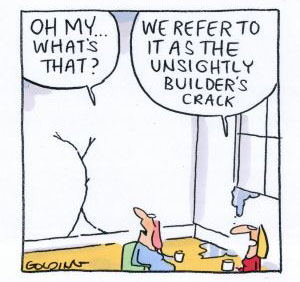
Illustration: Matt Golding
In Caulfield North, sinkholes developed in a basement car park. At a
Collins Street apartment tower, rain was coming through the roof. In
Brunswick, 34 unit owners were told it would be easier to pay $1.4
million out of their own pockets to fix problems with water seeping
into the complex, rather than pursue a deregistered builder in court.
Strata Community Australia is calling for a new system, where
developers have to put aside a "bond" worth 2 per cent of the cost of
their residential development.
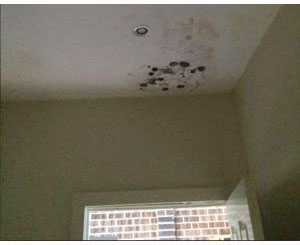
Mould on a ceiling caused by a leaking membrane lining a shower. Photo: Supplied
"Within two years of being built, they have to fund a defects report.
If there are defects in the building, there is money in the kitty," Mr
Beck said.
"It may not be enough in a lot of cases – but it's a very good start."
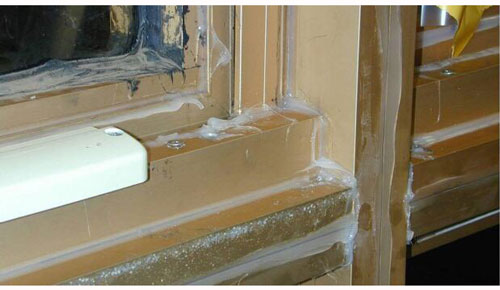
An attempt to seal a leaking window in a Melbourne apartment. Photo: supplied
'If it has a balcony, it will leak'
Waterproofing (or the lack of it) is considered a leading and systemic
problem for apartment buildings in Melbourne today, with many who
manage the city's apartment towers saying "if it has a balcony, it will
leak".
Some apartments have become uninhabitable through water damage caused
by poor construction methods, with water seeping through multiple
levels where proper waterproof membranes have not been installed.
Phil Dwyer, president of the Builders Collective of Australia, has no doubts about the damage poor waterproofing can wreak.
"What might happen is that the water gets into walls or the structure
of the floor, and it starts to rot the timber," he said. "It can do a
lot of damage in a short period of time."
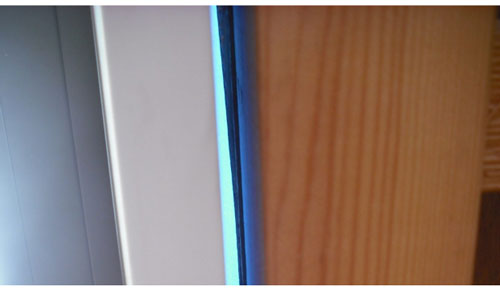
An air gap between a wall and a window frame. Photo: Supplied
Windows have fallen out of high-rise apartments
Another key problem in Melbourne is windows and glazed balconies
leaking, falling out, warping or cracking when installed incorrectly or
used for the wrong purpose.
Express Glass managing director Adrian Grocott said glass installers
were not licensed as a trade and mistakes were not being picked up by
building surveyors (inspectors) before new residents moved in.
"There is really nothing stopping anyone bringing in a container of
product from overseas, installing it in a building and having that
installer hand over a piece of paper saying this product complies with
the building code in Australia," he said.
"That's the end of it until something goes wrong. There is no policing of work that is being installed on a construction site."
Australian Window Association chief executive Tracey Gramlick said that
when problems occurred they could cost many millions of dollars to fix,
especially if the window faults caused water to leak into the walls and
ceilings of apartment buildings.
She said there was a growing national trend of cheaper imported glass
and glazing being substituted during the design process to save money.
Owners are left carrying the can
But it is what happens when thing go awry that is perhaps the greatest cause for alarm.
Consider the case of Amanda Frazer, a first-home buyer who bought in
Ormond off the plan in 2012. When she went to inspect her two-bedroom
home, she discovered something different to what she had signed up for.
The developer had squeezed another unit into the building and
significantly reduced the size of her property's balcony.
Ms Frazer contacted her lawyer, who told her to settle on the property or risk being sued.
She called the council (municipality). The council inspected the
building and declared it illegal; because of the extra apartment jammed
in, the complex no longer complied with the planning permit.
Ms Frazer said an inspector found further breaches in the building
code: the floors weren't level, the stairs were too steep and the
ceilings too low. "It was a shoddy finish. You could see the lack of
care," she said.
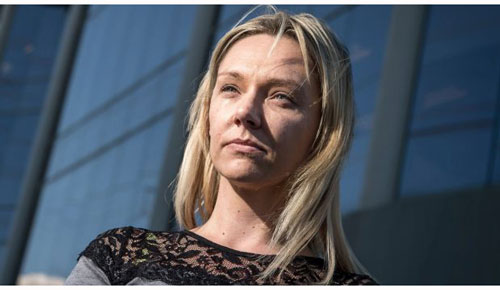
Amanda Frazer says she has been so scarred by her experience she will never buy another home. Photo: Justin McManus
Although the property had been approved by a private building surveyor
following construction, her home remained "illegal" for three years,
meaning it could not be sold. Ms Frazer said she would probably still
be in the same situation if Mr Dwyer had not volunteered his time to
help the owners get retrospective approval.
"I would call the Victorian Building Authority and they would say call
Consumer Affairs. Consumer Affairs would say call the Law Institute,
and the Law Institute would say contact the surveyor or the council and
it would just go round and round for months," she said.
"I just think it's disgusting that in Australia you can buy a property
and when it turns out to be illegal, it's the owner's responsibility.
"Isn't this why we have councils? Isn't this why we have surveyors?
They should just do their job properly. Because when I don't do my job
properly, I get held accountable."
Ms Frazer received no compensation from the developer and there was
little point pursuing him for the lost value in her home and repairs
(estimated to be up to $100,000) as his businesses went into
administration.
This is not unusual. Many apartment owners choose to fix thousands of
dollars' worth of defects themselves, because the developer has gone
bankrupt, or it would be too expensive to take them to court.
What about insurance?
Although domestic building insurance is mandatory for all Victorian homes up to three storeys, high-rise dwellings are exempt.
Construction law expert Andrew Whitelaw, of TressCox Lawyers, said this
meant if a builder went bankrupt, home owners and investors might have
no choice but to pay substantial bills to fix building defects.
"A purchaser who buys a lot for $350,000 might be looking at
contributions to multimillion-dollar rectification projects that they
had little or no knowledge of at the time they purchased," Mr Whitelaw
said.
"It's a fundamental flaw in the system."
He said that while the "overwhelming majority of builders" did the
right thing, things did still go awry, and when that happened
"complicated and complex circumstances" needed to be worked through.
The Andrews government is considering making changes to domestic
building insurance arrangements before the next election, while a new
body called Domestic Building Dispute Resolution Victoria will have the
power to compel builders to fix problems, finish work or pay for the
rectification—part of a range of recent reforms in the sector.
"We're strengthening consumer protection to avoid costly disputes and,
if disputes do arise, [to] resolve them quickly and without the
personal cost and financial stress of the old system," Planning
Minister Richard Wynne said.
The jury is still out on whether these changes will significantly
help the home owners lumped with major defects, or prevent them in the
first place.
"I'm worried that they won't," Mr Dwyer said.
While the new laws prohibit builders from appointing the building
surveyors who are meant to check their work, Mr Dwyer said builders
would still ask their clients to appoint their preferred building
surveyors.
"It remains exactly the same – nothing changes – so that's a waste of space," he said.
Mr Dwyer is also concerned the new dispute resolution system would not involve enough people with building industry expertise.
"It might be better, but I don't think it will be good," he said.
Note:
Did you notice that no condo buildings were identified by name or address.
—editor, CondoMadness
top contents
chapter previous next






